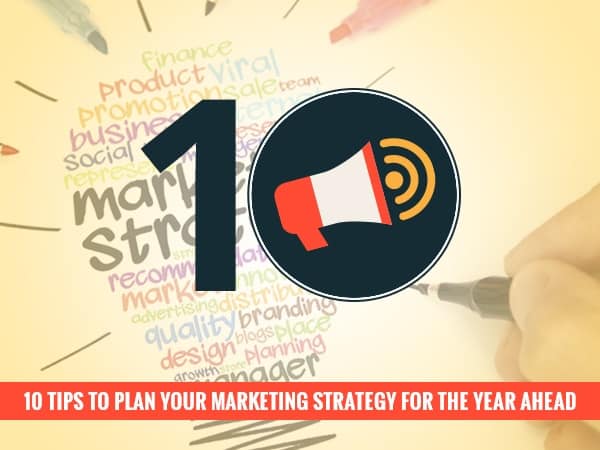
There are plenty of exciting innovations coming to make marketing content easier.
This year offers many opportunities to streamline creative processes and deliver excellent results. Many ideas, such as the now seemingly ubiquitous “Internet of Things,” became prominent in 2014, and manufacturers and developers continue to work hard to create networked devices that serve specialized skills or enhance creative power for an emerging class of prosumers.
As product makers think about shifting consumer tastes and needs, marketing professionals must be aware of how technologies offer more and higher quality access to an audience.
Here are 10 tips to stay on top of these new developments in 2015:
1. Use Personalization to Enhance Materials
Now that everything is networked and everyone is online all the time, marketers have unprecedented access to a stunningly broad audience. These are exactly the kinds of conditions many had hoped for from the beginning of the internet.
Yet an impressive amount of research has shown that personalization improves the effectiveness of marketing content. Personalized email fields drive up click-through rates of email advertising and users immensely prefer sites that offer unique web experiences for individual customers.
With the incredible amount of data available to advertisers, the possibility of personalization means consumers have better and more useful information available to them. Personalized web experiences have driven up sales for a variety of companies, and many will be exploring this over the course of 2015.
2. Simplify and Upgrade Your Web Site

Personalization goes hand in hand with simplification. Users want interfaces that guide them without having to strain their eyes searching the screen for the right link. There is no single, simple solution to streamlining a website, but these guidelines can push you in the right direction:
- Humanize the experience. UI professionals are now putting greater emphasis on making use of natural human tendencies and preferences to make engaging websites. This might mean having menus that appear and disappear as users navigate through them, or using visual prompts to guide them to fields they need to fill out. Expect to see far fewer text walls and many more brightly colored sites with easy to use interfaces.
- Always update your content. Hopefully by now everyone knows that a business website is not an automatic revenue generation machine. Much like brick and mortar locations, websites needs routine upkeep and maintenance. This means frequent updates, perhaps from a blog, so try to think about ways to keep a steady flow of content going up on the site. This will improve search rankings and page views.
- Track the data. Website analytics are the best, and possibly only, way to know whether or not a website is working. Be sure to define what success means for your site by setting clear goals that can be measured with analytical tools. Google, Facebook, and Twitter offer a host of applications businesses can use to track the performance of their online channels. Yext offers Instagram monitoring, which allows companies to see photos and videos customers have posted, allowing for feedback and interaction opportunities.
3. Make Everything Scalable
Business web presence has to be ready for the end of desktop and the beginning of mobile dominance. 2015 is the year when optimization for mobile platforms will dominate marketing strategies.
Simple, pleasing imagery makes for higher quality user interfaces on mobile devices. Using dynamic content, such as ghost buttons that appear and disappear as users make selections, means not clogging up precious screen space with a lot of text.
Based on extensive research, Forrester claims that by 2020, one in five sales will result from data collected on wearable devices. Utilize HTML5 and other programming options to optimize your web presence and incorporate responsive design.
4. Take Advantage of Automation Tools to Achieve Real Time Marketing
Research from the Aberdeen Group showed that automating marketing communication could increase conversion rates by 50 percent. The number of tools available for automating the timing and audience of marketing content is set to increase in 2015.
Get familiar with comprehensive applications that can handle all of those tedious marketing tasks and has processes that allow for precision timing of communication. This means better content for the consumer and more time and money for businesses. An enterprise may already have the tools they need in their existing marketing applications, so a thorough evaluation of available resources may save time and money in the future.
5. Continue Putting Out High Quality Content

Google is reorienting how their service handles search optimization, ushering in what they are referring to as the “Age of Semantic Search.” In 2014, a site may have simply been penalized for low-quality content and underhanded SEO tactics; today, such content can render a page totally irrelevant to the search algorithm.
Search companies like Google and its competitors are trying to figure out how to understand what consumers want when they use search tools. By putting more weight on how words in a search phrase are related in the immediate context, they aim at giving their users the results they want, even if they have not worded their search in just the right way.
This shift away from keyword-focused searches means that users can employ natural language, particularly in the form of questions, to find what they need on the internet. What it means for businesses is that their content must continue to be high quality, speaking to their customers’ needs and aspirations, or it will simply be ignored.
6. Simplify Management by Getting Leaner
Corporate structures built on analog technology seem bloated and byzantine to most contemporary workers and managers. Many organizations seemingly invent complexity or operate with complicated parallel bureaucracies whose original purpose has long been forgotten.
Telecommunications technology and, more importantly, consumer taste, are driving the movement away from so-called “silo” structures in corporations. Businesses such as Amazon and Facebook have achieved the status of giants like Standard Oil and US Steel in their heyday. They have operations so lean it would have been impossible in any other time prior to now.
Companies that are streamlining operations have ushered in a new era of decreased regionalization, but increased customer engagement. Refocusing on central achievements relevant to the entire company makes it possible to avoid pitting regional directors against one another.
7. Create High Quality Consumer-Facing Media
The marketing agencies that will dominate 2015 already have a strong media team, putting out excellent features that directly access consumers. Because it is possible to bypass networks and publishers through new media technology, marketing media need no longer be suited to needs other than the client.
YouTube, Vimeo, and a variety of other services offer ways to not only send an unfiltered, brand-focused message to consumers but to also tailor that content to their interests. Analytics tools help businesses understand who their audience is and through exactly what channels they were accessed.
The fuzzy science of television ratings is replaced in the digital marketing world by the precision science of Big Data. Every agency now can see exactly how successful each piece is individually and assess campaigns on a granular level.
8. You Must Have a Comprehensive Business Listing Analysis

Companies benefit from a presence on a variety of listing websites. While the boost to SEO and traffic is invaluable, it is imperative to have an accurate way of keeping track of reviews and info.
Surprisingly, a lot of businesses have inaccurate information; but not from any fault of their own. Some online directories automatically create listings, but pull incorrect data. Managing and cleaning up these records is key, because the number of sites and the potential for customers to find the wrong info increases daily. Yext, for instance, is an excellent tool for tracking listings on most popular business directories, allowing businesses to maintain up-to-date geolocation data.
9. Navigate Negative Reviews Carefully
Many businesses are tempted to respond to negative online reviews, thinking the bad press could destroy their reputation. Unfortunately, this sort of thinking originates in the old days of mainstream media critics. When customers put a review up on the internet, it is actually an excellent opportunity for businesses to gain an enhanced understanding of the needs of their customer base.
Inevitably, your customers will want to give some negative feedback. Negative reviews on a site like Yelp are not an altogether a bad thing. Having some negative reviews makes a businesses’ page seem more legitimate. Responding graciously and offering complimentary services may help smooth over the relationship. Never fear some bad press, it is an opportunity to improve business operations.
10. Integrate Social Media Across the Marketing Strategy

Buttons and widgets allowing users to share content on social media sites are an incredible boon to advertisers. This is not purely for corporate website content; it must be present in all branded marketing communications. Social media services offer share button integration across marketing communication networks.
There are still more ways social media channels are increasing utility for advertisers by integrating services across sites. For example, Twitter recently implemented Amazon integration, and Facebook has a local advertisement service. Recent research has shown that integrating social media across marketing channels can increase click-through rates by more than 150 percent.
The Year of Micro-Segmenting
2015 will surely be remembered as the year when market segmentation strategies turned to increasingly smaller targeted groups.Click To TweetMany call this the “Age of Post-Demographic Marketing,” where advertising begins to be geared toward individual customers based on a variety of data about them personally.
As more ways to reach your audience surface and the distance between consumers and products narrows, stay on the lookout for opportunities to access your client base. In such a connected world, the value and potential of an effective marketing strategy is irreplaceable.
Sources
http://www.inc.com/peter-roesler/4-marketing-trends-business-owners-should-use-in-2015.html
http://www.yext.com/blog/2014/12/yext-launches-instagram-monitoring/
http://blog.visual.ly/five-b2b-marketing-trends-2015/
http://www.forbes.com/sites/avidan/2014/11/09/11-marketing-trends-to-watch-for-in-2015/
http://searchengineland.com/8-tips-for-planning-your-small-business-2014-marketing-strategy-179004
http://www.yext.com/blog/2013/07/how-yext-works-part-i-match-and-lock/





 The Right Font Matters – How to Pick It
The Right Font Matters – How to Pick It